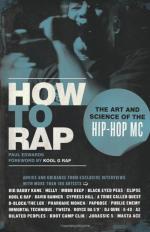|
This section contains 6,470 words (approx. 22 pages at 300 words per page) |

|
SOURCE: "The Fine Art of Rap," in New Literary History, Vol. 22, No. 3, Summer, 1991, pp. 613-32.
In the following essay, Shusterman praises rap music as a postmodern form of high art that challenges such modernist aesthetic conventions as originality, autonomy, integrity, rationalization, and secularization.
… rapt Poesy,
And arts, though unimagined, yet to be.
—Shelley, Prometheus Unbound
In the view of both the culturally elite and the so-called general public, rap music lurks in the underworld of aesthetic respectability. Though it is today's "fastest growing genre of popular music" [Jon Pareles, New York Times, January 14, 1990], its claim to artistic status has been drowned under a flood of abusive critique. Rap has not only suffered moral and aesthetic condemnations but also organized censorship, blacklists, arrests, and the police-enforced stopping of concerts. Moreover, on a different level of cultural combat, we find attempts to dilute and undermine rap's ethnic and political content...
|
This section contains 6,470 words (approx. 22 pages at 300 words per page) |

|


